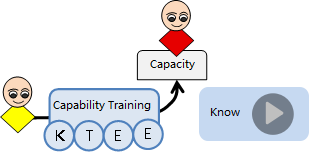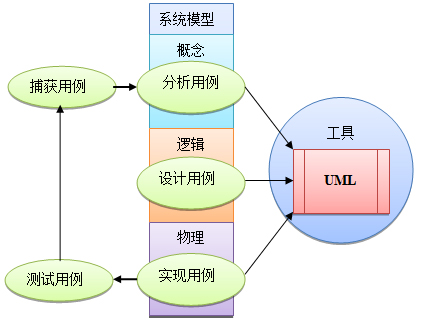|
|
| Successful Case
|
| Continental Automotive Electronics |
| Bosch Automotive Electronics |
| Schaeffler electric drive |
| Joyson Automotive Electronics |
| Huawei Technical Center |
| BMW Automotive Research and Development Center |
| Geely Auto Research Institute |
| Byd Automotive Research Institute |
| |
|
|
|
|
|
|
| Courses > Modeling |
|
 |
|
UML + Embedded System Analysis and Design
1 |
Views 
|
|
 |
|
|
Henry
|
| Senior system architect, with more than 15 years of architecture and development experience, has undertaken a number of embedded software architecture design. |
| |
|
|
| Time Location: Beijing, Shenzhen and Shanghai open classes based on registration |
| Course CostÔºö1300$/Person
|
|
|
|
| Internal Training: You can customize internal training according to the needs of the enterprise. |
|
 |
Certification:
Learn about the competency model before training.
Competency assessment after training:
Online
Exams
Ability Analysis, give learning suggestions
The qualified person shall be issued a certificate as proof of vocational skill qualification
|
 |
|
|
| Combined with practical embedded case explanations, the course explains how to use UML: describe existing and increasingly complex embedded systems, identify problems, and clarify ideas according to the characteristics and difficulties of embedded systems: hardware-related, real-time, multi-tasking, and distributed.
Adopt a model-driven analysis and design approach for embedded systems in response to new product requirements. Practice: System Analysis, Software Requirements Definition, Software Architecture Design and Modeling, Detailed Design and Modeling, Model Simulation and Verification, Model-Based Testing. |
 |
| |
| Training Goal |
- Clarify what modeling, what to model, and the modeling conventions that use UML .
- Learn how to apply UML modeling based on a process-oriented language.
- Understand requirements models and analysis methods for embedded systems.
- Architectural models and design methodologies for embedded systems.
- Development model and implementation mechanism of embedded systems.
- Learn how to model complex control logic with state machines.
- How to describe the architecture with a block diagram.
- How to use a behavior diagram to describe the process of running.
- Model the hierarchy and dependencies of the system: driver, middle, and application layers.
- How to simplify the analysis and design of complex structures and behaviors by using a step-by-step decomposition strategy
- Learn about modeling tools and modeling methods for embedded UML.
- Learn how to simulate and validate models based on modeling tools.
- Learn how to set up automated model-based test scripts. Ôºö
|
 |
|
| Training Target: intermediate and senior programmers, system analysts, demand researchers, architecture designers, product marketing technicians |
| Student Foundation: have certain experience in programming, analysis and design |
| Teaching Method:
Customized Course + Case Explanation + Group Discussion, 60% Case Explanation, 40% Practical Exercise
|
| Training Content: 2 Days
|
Overview of UML and Embedded Modeling
|
- Why apply UML for embedded system modeling
- What UML can and can't do
- What fits UML, don't model blindly
- Introduction to UML specifications
- Introduction to the SysML (Languages) specification
- Typical illustration of UML embedded system modeling
|
UML & Embedded Modeling Overview
Embedded Analysis Design Methodology: Process-Oriented vs. Object-Oriented
|
- The special features of embedded systems
- Organization of objects in the program
- The difference and connection between object-oriented and process-oriented
- Design a roadmap for process systems analysis
- Object-Oriented Systems Analysis Design Roadmap
|
| Embedded System Requirements & Modeling |
- Characteristics and Challenges of Embedded System Requirements
- Embedded system requirements are oriented towards the decomposition of hardware and software
- Identify Actors and UseCases
- Model your use case
- Describe and analyze the use case
- Object interaction scene analysis
- Describe the device interface requirements
- Non-functional requirements analysis and modeling
|
| Embedded system analysis |
- What embedded systems analyze
- Analysis methods for embedded devices
- Analysis of embedded domain objects
- About Embedded Processing Scenario Analysis
- Analysis of device-related behavioral rules
|
Architectural foundations
|
- The difference and connection between embedded architecture and general software architecture
- A typical view of the embedded architecture description
- Modeling examples of embedded architectures
- Methods for Embedded Architecture Verification
|
| Hierarchical schema design |
- Embedded typical hierarchical structure
- Application of UML in hierarchical design
- Relationships between embedded hierarchies
- Hierarchical interface design
- Hierarchically dependent modeling
- Hierarchical design principles
|
Subsystem design, subsystem packaging design method
|
- Typical structure of an embedded subsystem
- Application of UML in subsystem design
- Principle of subsystem division
- Subsystem interface design and modeling methods
|
| Handle complex system designs |
- Hierarchy of structures: How complexity is managed through the use of hierarchies, which also includes multiplicity and replication, as well as end and trunk ports.
- Behavioral hierarchies: How to manage complexity using hierarchical finite state machines, covering related concepts, including hierarchical state transitions and hierarchical states, and UML representations of these concepts.
- System hierarchies: Techniques for building complex systems using layers and packages
|
| Embedded processing scenario design |
- Determine the orientation of the embedded scene processing
- Identify the device and software objects that are relevant to the scene
- assign behaviors to devices and software,
- Describe the interaction between modules
- Describe the structure of the behavior
- UML modeling of the scene
|
| Multi-task, real-time system analysis, design, and modeling |
- Embedded real-time, multitasking
- How to model real-time, multitasking systems with UML
- How to describe concurrency
- How to analyze and design behaviors
- How to reconcile behaviors with each other
- Port, protocol, and connector design
- Assign behaviors to handling units
|
| Component & Distribution Design |
- Typical division of components
- Component encapsulation method
- UML Component Diagram and Distribution Diagram Specifications
- Node connection and configuration
- Components & Builds
- Components and continuous integration
|
| Tool-based model validation and refactoring |
- Principles of the UML Modeling Tool Framework for Real-Time Systems
- The execution mechanism of the model engine
- and embedded operating systems
- Model code generation
- Model compilation
- Model running and model validation
- Model-based system refactoring
|
|
| |
|
|
|
|
|
| Consulting Objective
|
Help build model-driven analysis, design, development, testing |
| Scope Consultation |
Requirements Modeling, Architecture Modeling, Database Modeling, Code Modeling, Test Modeling.
|
| Consultation Method |
Model-driven development process training, modeling and management tool environment construction, combined with actual customer case demonstration, team practice guidance, model evaluation standards formulation, specification formulation |
| Successful Case |
Huawei Research and Development Center, Space Center of Chinese Academy of Sciences, Nanjing 14 Institute, China Mobile Research Institute and so on. |
| For more information:010-62670969, umlooo@hotmail.com
|
|
|
|
|